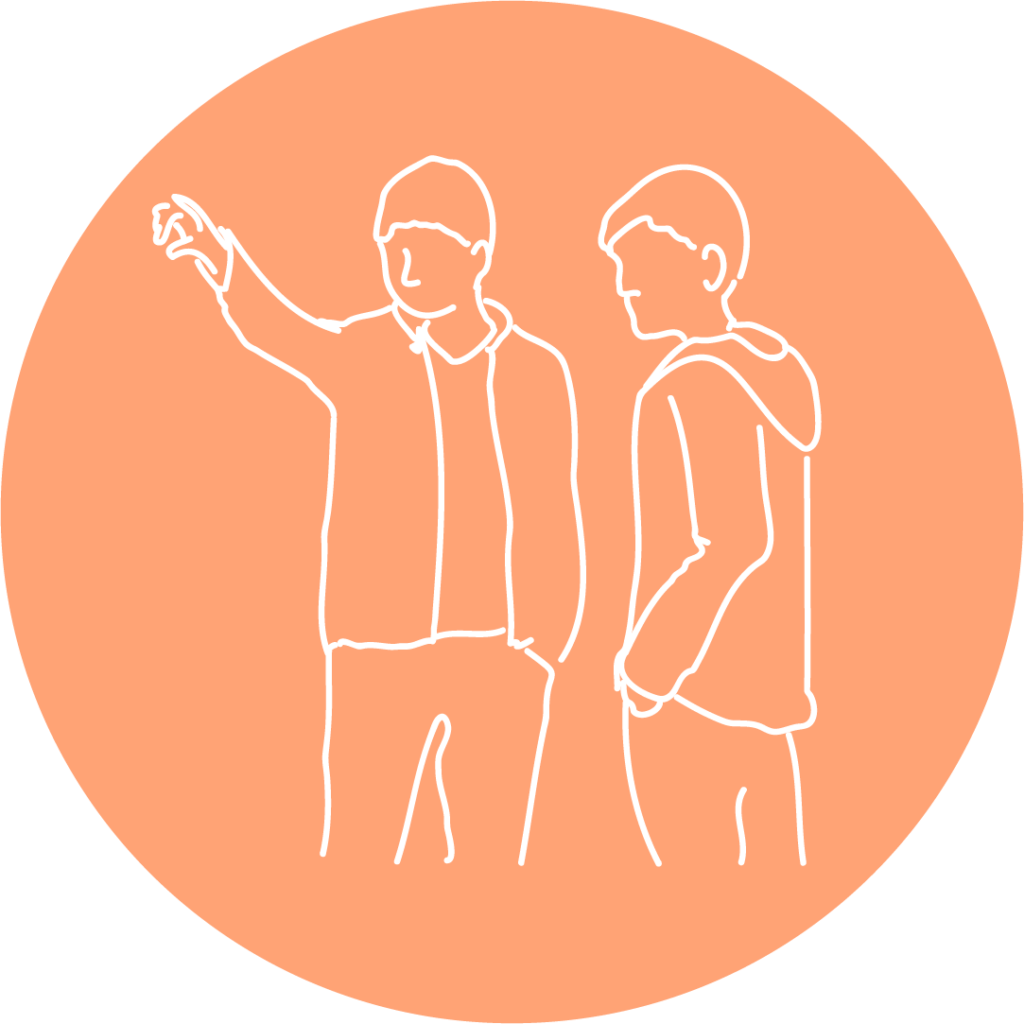Home / IMPRESSION WALK
Recommended age: 5-18 yrs
Place: On site
Time required: 1-2 hours
Material/tools: Questionnaire, pen and possibly a map
Purpose: Mapping and visualisation of perspectives
Where in the process: Pre-study

A first step in the process is to go together with participating children in small groups to the site that the children will be involved in developing. This method is a good way to gather children’s perspectives on the site and to take stock of what the site has and what it lacks.
You will need to think in advance about what questions to ask the children or what to collect in order to make the survey as fruitful as possible. You can download our suggested questions and inventory forms further down the page. Write the questions on a piece of paper with spaces for notes and use a hard surface to make it easier to take notes. If you have the opportunity, you can use a telephone to record the conversation. If you are working with a larger place or street, you may want to bring a map of the place or street where you can mark specific places that the children talk about. It is good to go in small groups and it is important that there is one adult per group who can listen, ask questions and take notes. If necessary, ask teachers or volunteers for extra help.
Gather the children at the place they will be developing. If it’s a street you’re working on, it might be a good idea to walk back and forth along the street several times. Use the questions as support but also let the children speak freely.
Children and young people aged 9 and above can be given their own forms to fill in. For example, this could be an inventory form where children are asked to take stock of what is and is not present in the place, such as hazards and play opportunities.
Even if the children have their own forms, it is important to walk with them and listen and ask follow-up questions.
After the walk, it can be a good idea to sit down and go over what the children have talked about. This is also a good time to ask follow-up questions or to check if everyone in the group thinks the same.
Try to be in the moment but remember to take notes. Ask follow-up questions; for example, if a child points out a bush as a place to play, ask why they like to play there to understand why the bush invites them to play – is it the bush itself that attracts them or is it the location or design of the bush? Adapt questions according to the age of participating children. For example, it can be difficult for younger children to know whether a place is safe or not because they do not have the same sense of safety as older children. If you find it difficult to walk, listen and take notes at the same time, stop when you notice that the children have something to say. If you can, record the conversation so that you can relax and go back and listen again. However, it is important to remember to inform the children that you are recording and for what purpose you are recording.
The impression walk is difficult to use as a stand-alone activity because what it leads to is prior knowledge and understanding. It works best as part of a feasibility study for a development process.
Download our questionnaires and inventory forms!
5-7 years: methodological material for those who walk with the children. The leader of each group takes notes in the document of what the children say.
8-18 years: the children are given a sheet of paper each to answer the questions themselves, but the leader of each group also has a paper on which to record what is said and things that the children might forget to write down.
We use cookies to give you the best experience on our website. If you continue to use this website, you agree to the use of cookies.
Vi använder cookies för att ge dig den bästa upplevelsen på vår hemsida. Om du fortsätter att använda den här webbplatsen godkänner du detta.